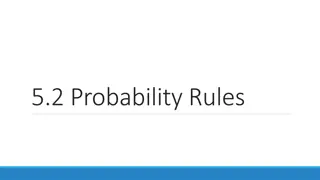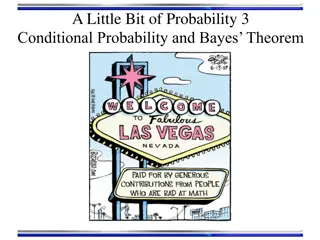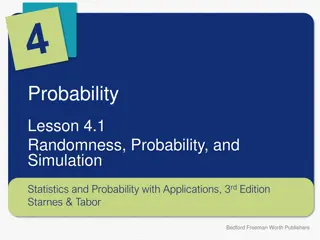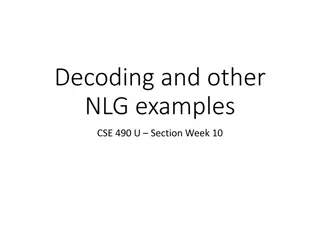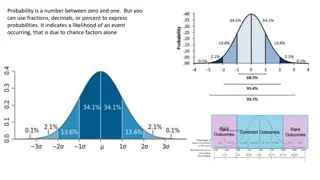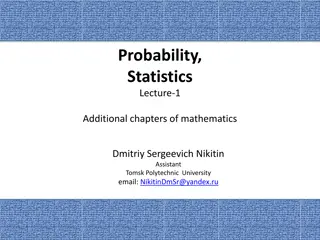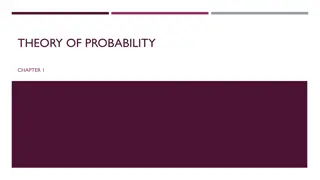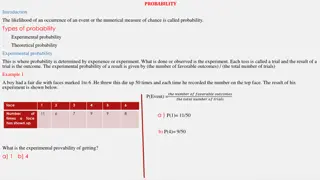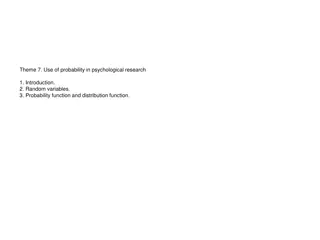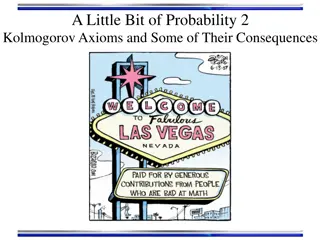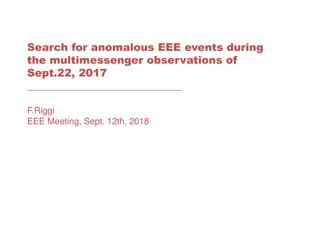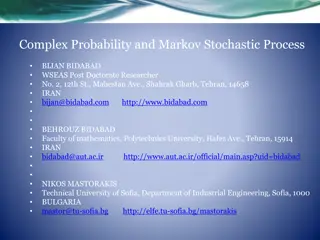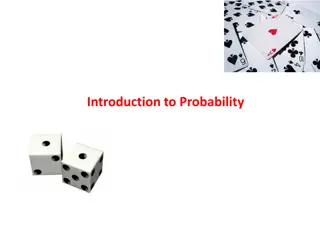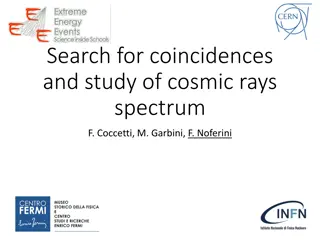Decoding Coincidences: Expert Insights on Probability and Chance
Experts delve into the world of coincidences, tackling the New Jersey Lottery wins, the Law of Very Large Numbers, and dispelling myths surrounding multiple end points and close-but-not-exact scenarios. Learn how statistics and probability play a crucial role in understanding seemingly improbable events.
Download Presentation

Please find below an Image/Link to download the presentation.
The content on the website is provided AS IS for your information and personal use only. It may not be sold, licensed, or shared on other websites without obtaining consent from the author.If you encounter any issues during the download, it is possible that the publisher has removed the file from their server.
You are allowed to download the files provided on this website for personal or commercial use, subject to the condition that they are used lawfully. All files are the property of their respective owners.
The content on the website is provided AS IS for your information and personal use only. It may not be sold, licensed, or shared on other websites without obtaining consent from the author.
E N D
Presentation Transcript
Is 1 in a Trillion Coincidence? Not Really, Experts Find Group 3
OUTLINE Questions to be addressed New Jersey Lottery The Law of Very Large Number Multiple end points Close but not exact Conclusion Take home message
Questions to be addressed What is the major problem? How was the problem solved?
Is it a coincidence? When a woman won the New Jersey Lottery twice in four months, it was widely reported as an amazing coincidence that beat the odds of one in 17 trillion. After much analysing, the experts found out that the chances that such an event could happen to someone in the United States was more like one in 30. With a large enough sample, any outrageous thing is apt to happen
THe Law of Very Large Number The law of truly large number states that even if there is only a one in million chance that something will happen, it will eventually happen given enough time and people. So if something happens to only one in a million people per day and the population of the United States is 250 million, we can expect to have 250 amazing coincidences everyday.
Right answer, wrong question One in 17 trillion is the odds that a given person who buys a single ticket for exactly two New Jersey lotteries will win both times. The question is What is the chance that some person, out of all the millions and millions of people who buy lottery tickets in the United States, hits a lottery twice in a lifetime? So like the odds of this happening is actually 1 in 30 which is quite possible.
Multiple end points Another principle that demystifies many coincidences is called the multiple end points occasion. The multiple end points occasion refers to that anything that two strangers have in common can be counted as a coincidence-(same birthday,same first or last name,etc..) So when two people discovered that they come from the same hometown, it may seem coincidental at first.But,in fact, the chances of them getting a match is actually quite significant.
Close but not exact The third category of coincidences is those that are close but not exact. Such form of coincidences have a high probability of occurring. For eg, with 23 people in a room,you have a 0.5 probability of finding two people having the same birthday. But you only need 7 people and you will have a 0.5 probability of finding a match between two people having the same birthday within a week.
conclusion By analysing coincidence with these three principles (The law of very large number, multiple end points and coincidence that are close but not exact), what looks unexpected usually turns out to be expected. Why does an educated person think there might really be something in coincidences? No one story holds up on its own. But taken together, they mean something. Take home message:A lot of flawed arguments don't produce a sound conclusion (fundamental law of logic)



